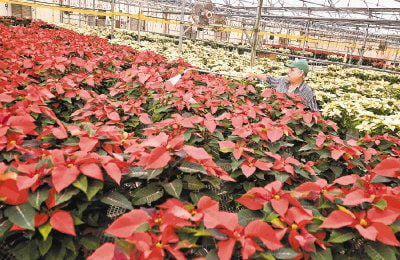As the holiday season approaches, poinsettias take center stage in festive dĂ©cor, their vibrant red, pink, or cream-colored leaves brightening homes, offices, and celebrations. These stunning plants, native to Mexico, have become a symbol of Christmas cheer. However, keeping a poinsettia healthy and thriving beyond the holidays can be challenging. HereĐÔĘӽ紫ý™s how to select the perfect plant and care for it throughout the year, ensuring it blooms again for many seasons to come.
Choosing a Healthy PoinsettiaWhen selecting a poinsettia, start by examining the leaves and bracts (the colored ĐÔĘӽ紫ýśpetalsĐÔĘӽ紫ýť that surround the tiny flowers). The bracts should be vibrant and fully colored, without spots, tears, or wilting. The true flowers are the small, yellow buds at the center of the bracts. A poinsettia with intact buds indicates freshness.
Inspect the foliage, which should be lush, green, and free of blemishes. Drooping or yellowing leaves may suggest stress or poor health. Look underneath the leaves for signs of pests such as whiteflies or aphids.
ItĐÔĘӽ紫ý™s equally important to check the soil. Avoid plants with overly dry or soggy soil, which can signify improper care. Finally, ensure the plant has been stored in a sheltered area away from drafts and extreme temperatures, as poinsettias are sensitive to sudden temperature changes.
Caring for Your Poinsettia During the HolidaysAfter bringing your poinsettia home, place it in a bright location near a south- or east-facing window but out of direct sunlight, which can scorch the leaves. Poinsettias thrive in temperatures between 65°F and 70°F during the day and slightly cooler at night. Avoid placing the plant near cold drafts, heat vents, or fireplaces.
Watering is crucial. Check the soil daily, and water when the top inch feels dry. Ensure the pot has proper drainage, as sitting in water can lead to root rot. If your poinsettia came wrapped in foil, poke holes in the bottom and place it on a saucer to prevent water from pooling.
Humidity is also important. If your home is particularly dry, consider misting the plant lightly or placing a shallow tray of water with pebbles near the pot to maintain moisture in the air.
Keeping Your Poinsettia Alive for Next YearWhile many people treat poinsettias as disposable after the holidays, they can thrive for years with proper care. Once the bracts fade (typically by March or April), prune the plant back to about 6 inches tall. Continue to water and provide bright, indirect light.
As spring arrives and temperatures warm, your poinsettia can move outdoors. Gradually acclimate it to outdoor conditions, starting with a shaded spot and eventually transitioning to a location with partial sun. During this time, fertilize monthly with a balanced houseplant fertilizer to encourage healthy growth.
Reblooming Your PoinsettiaGetting a poinsettia to rebloom requires attention to its light exposure in the fall. Starting in late September or early October, the plant needs 14 to 16 hours of complete darkness each night for about 8 to 10 weeks. You can achieve this by covering the plant with a box or placing it in a dark closet from early evening until morning. During the day, return it to a sunny location.
This strict light-dark regimen signals the plant to produce its colorful bracts. By November or early December, your poinsettia should begin to show its festive hues once again, just in time for the holidays.
A Symbol of ResiliencePoinsettias are more than a fleeting holiday decoration; they are living plants that can reward your care with years of beauty. By selecting a healthy plant, providing consistent care, and following the steps to encourage reblooming, you can enjoy the vibrant charm of poinsettias long after the Christmas lights have been packed away.
With a little effort and attention, your poinsettia can become a cherished part of your holiday tradition, representing not only the joy of the season but also the resilience and renewal that come with nurturing life.
























